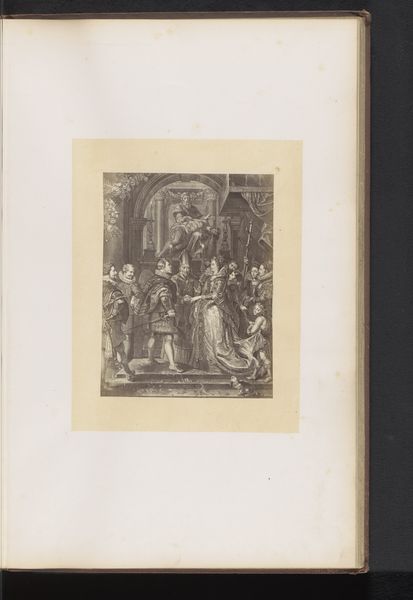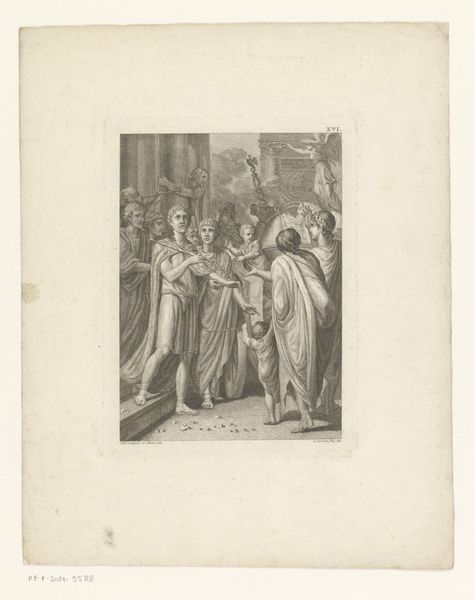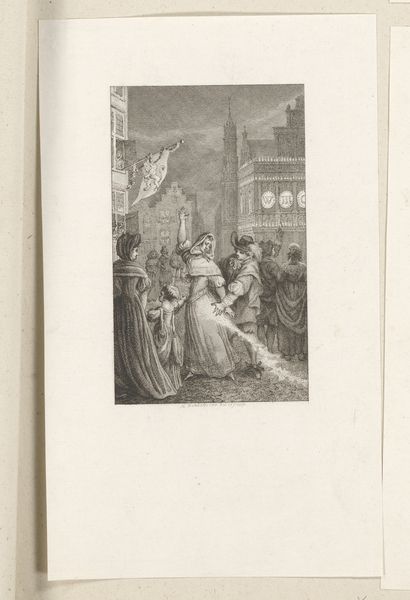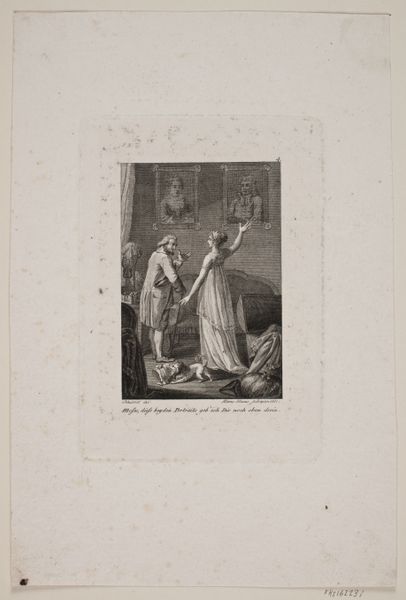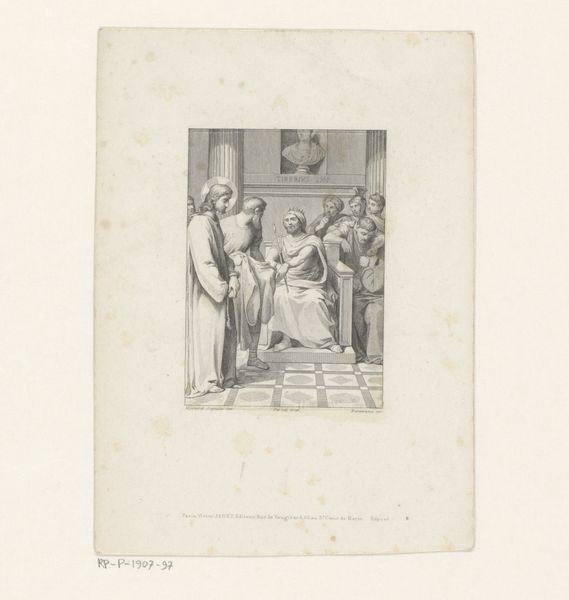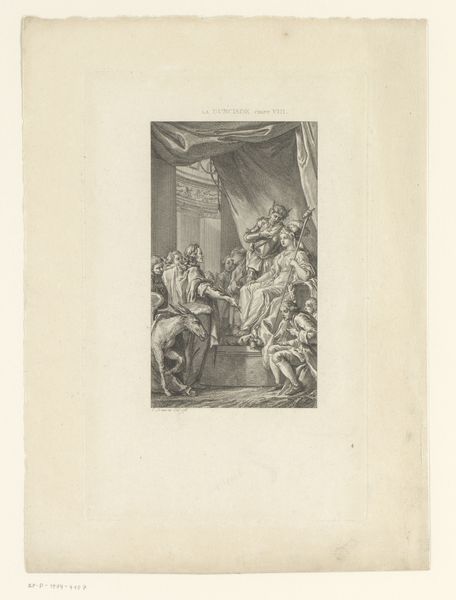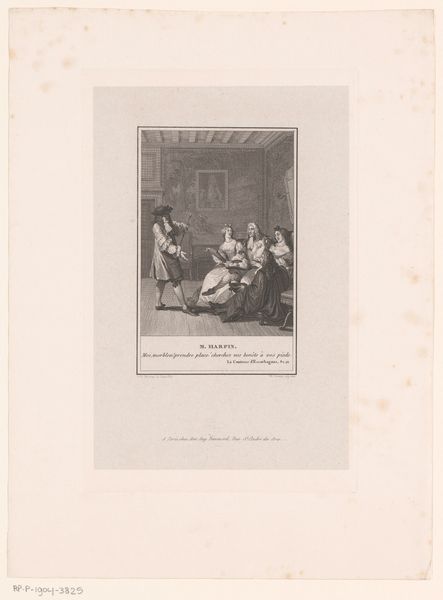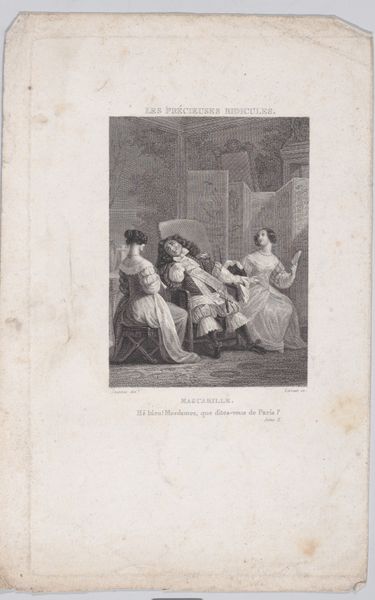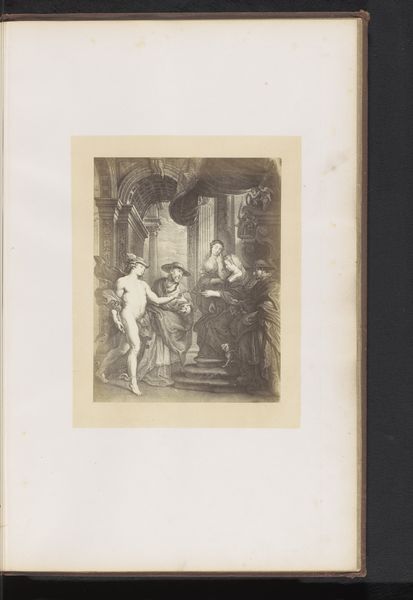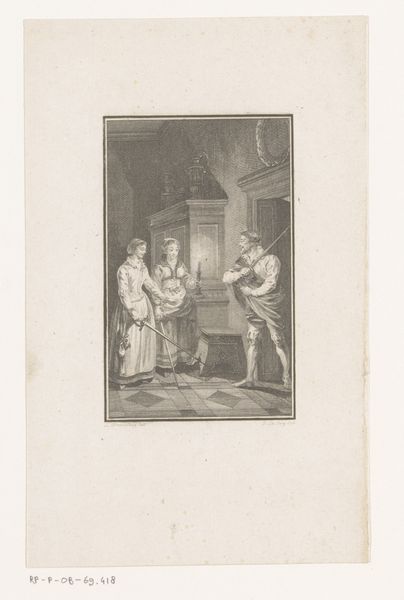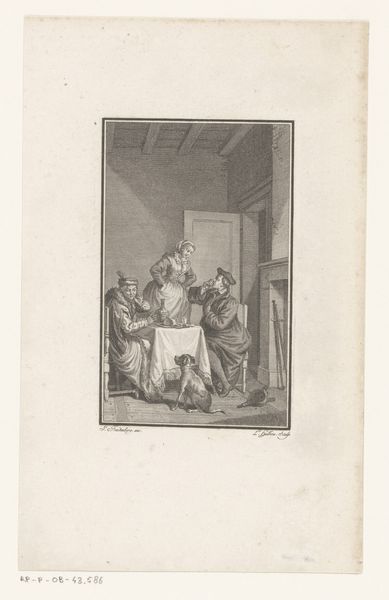
drawing, print, engraving
#
drawing
# print
#
romanticism
#
history-painting
#
engraving
Dimensions: Plate: 8 13/16 × 6 in. (22.4 × 15.3 cm) Sheet: 10 15/16 × 7 3/4 in. (27.8 × 19.7 cm)
Copyright: Public Domain
This print of a priest and nuns was made by Barthélemy Joseph Fulcran Roger, likely in the early 19th century, using etching and engraving. These are both intaglio processes, meaning the image is incised into a metal plate, which is then inked and pressed onto paper. Look closely, and you can see the fine lines created by the engraver’s burin and the more textured areas where acid has bitten into the metal. The artist would have needed tremendous skill to control these processes, building up the image line by line. The choice of printmaking speaks to the social context. In this period, prints were a key means of disseminating images widely and relatively cheaply. It allowed for this image of religious figures and rituals to reach a broader audience, reflecting shifts in religious and social life at the time. Paying attention to materials and making helps us understand not only the artist’s skill, but also the work's role in a changing world.
Comments
No comments
Be the first to comment and join the conversation on the ultimate creative platform.
